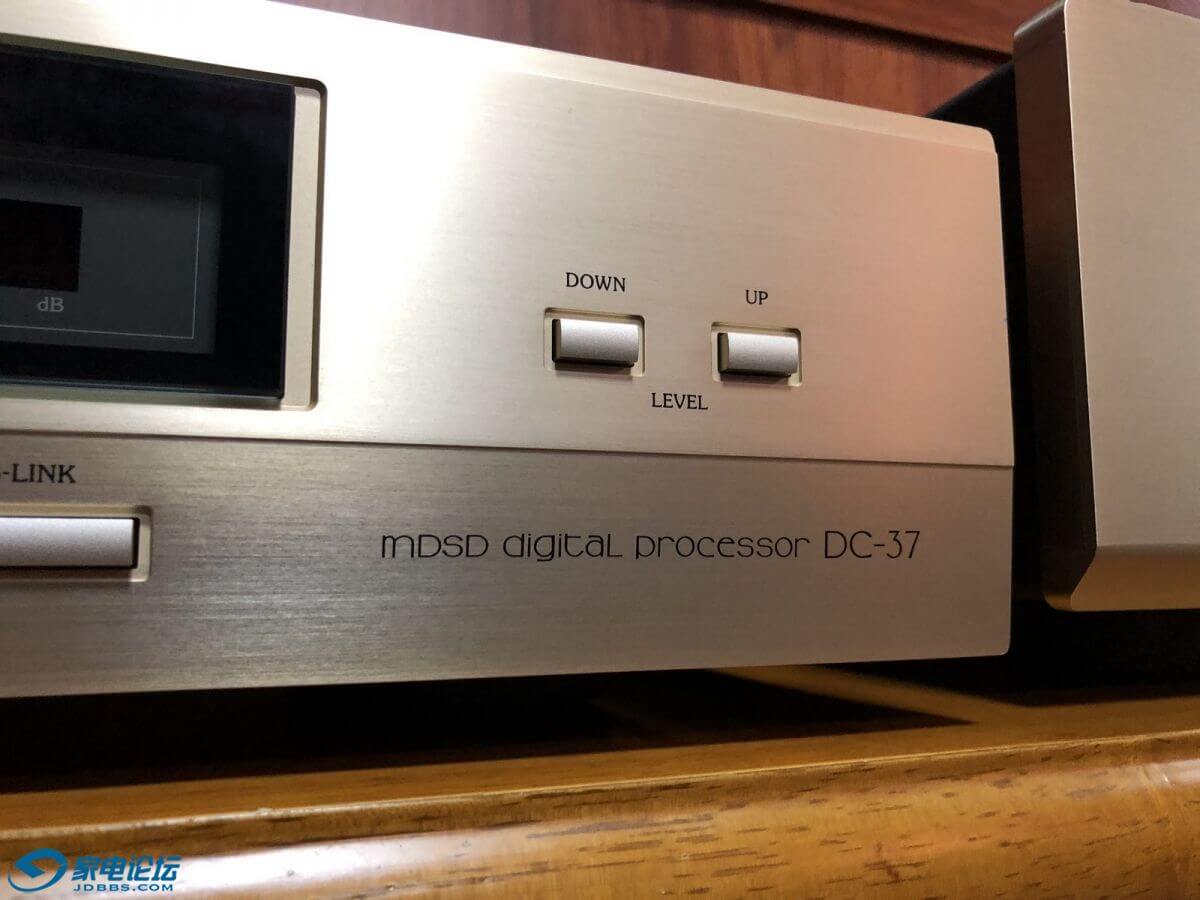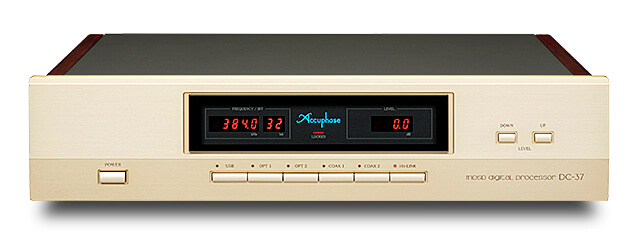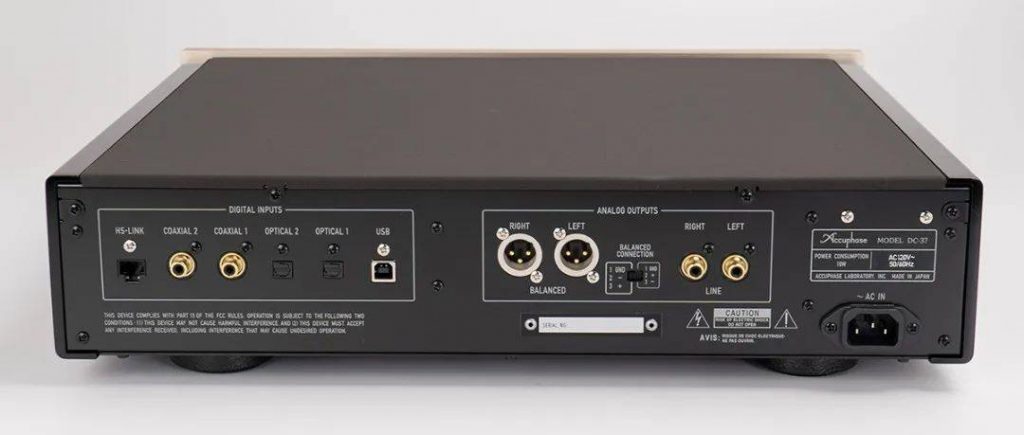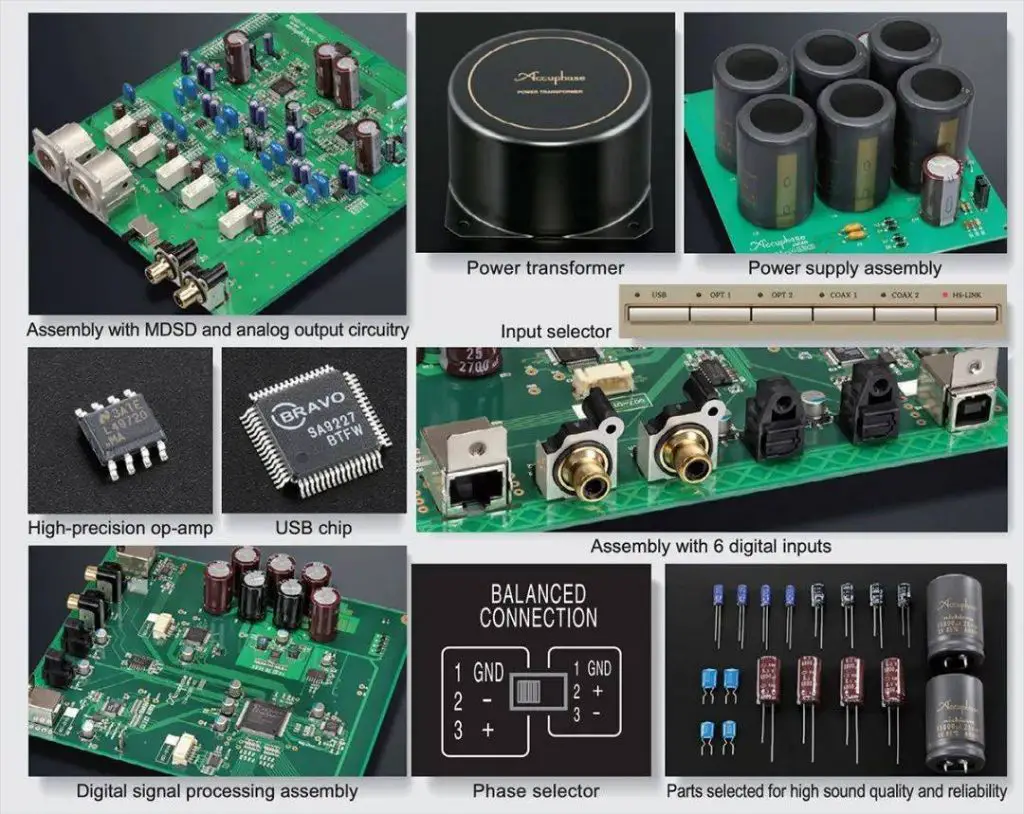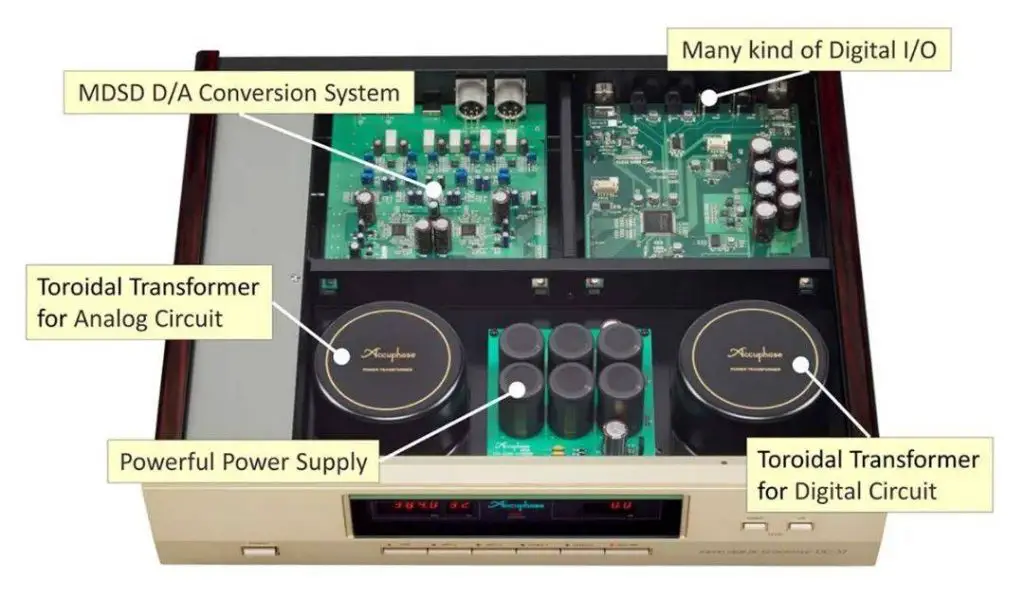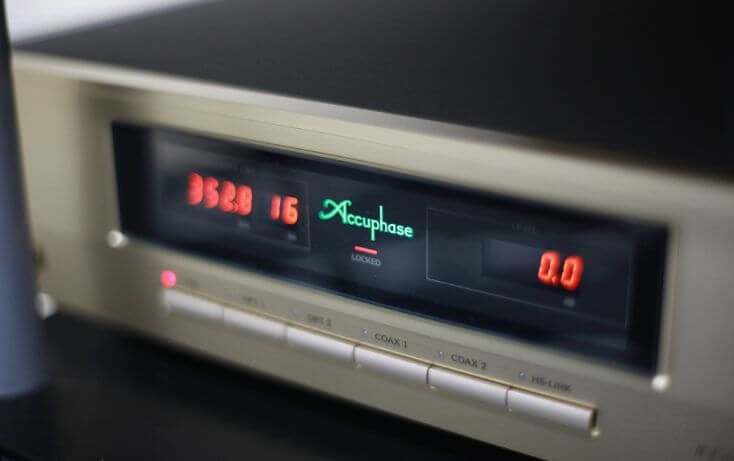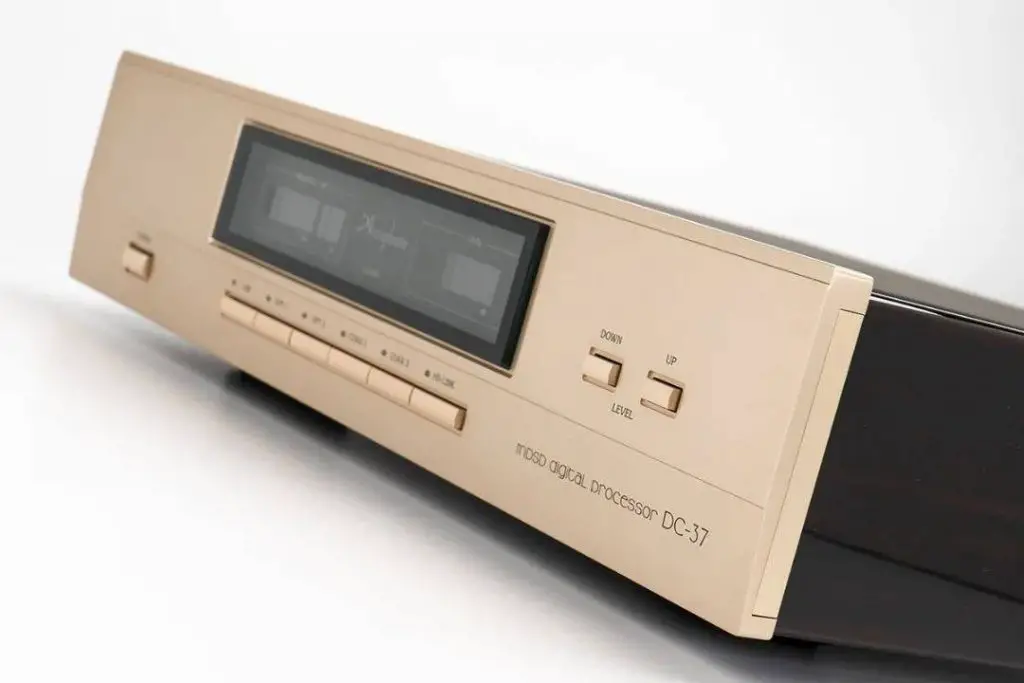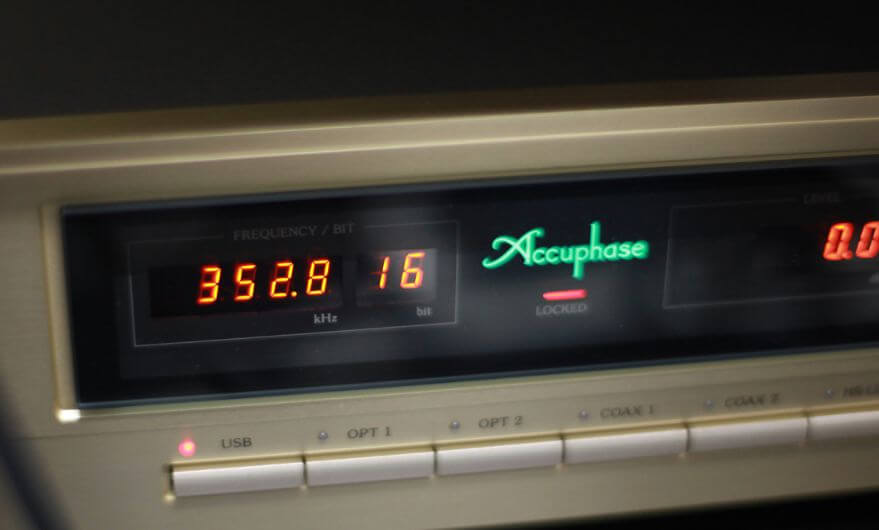Accuphase DC-37 Review
If you think that the most important thing of A DAC is to fully interpret the music information recorded in the records and files, then Accuphase DC-37 should be a good DAC.
If you prefer the DAC’s appearance should be high-end, and the sound should have the delicate and elegant features that only high-end models can have, then Accuphase DC-37 DAC should be able to suit your appetite.
If you think that a Hi-End audio system should pay attention to the circuit design of all aspects of the whole machine, it should have its unique circuit design to show Hi-End’s spirit, then Accuphase DC-37 should be able to meet your standard.
Accuphase currently has two DACs, one is the flagship DC-950, and the other is DC-37. There are also two SACD turntables and a CD turntable, which have digital inputs and can also be used as DACs. As far as the Accuphase said, the design of this DC-37 DAC is not simple.
Design
First of all, Accuphase applied the experience and achievements of DC-901 and DP-720 in the previous generation. It is the essence version of high-end models, retaining the most refined design of flagship models and bringing in reasonable simplification with more affordable prices. Moreover, its test report and performance data are very close to that of DC-901. No wonder the original manufacturer said that even if it is used with DP-900, there is no problem.
Secondly, Accuphase knows that the quality of the power supply is the key to the audio system’s sound. Two toroidal transformers are installed inside the DC-37, responsible for the power supply of digital and analog circuits, respectively. DC37 uses customized voltage transformers and giant filter capacitors to ensure the cleanest power supply.
Third, it is equipped with six pairs of digital inputs, including coaxial input and optical input, plus a USB type B and HS-Link connected to its turntable. Accuphase has not released any device with a network streaming function. They believe that network technology is getting development each year. Accuphase does not want users to buy a device, and it will be out of date after two years. Therefore, they never launch their own network streaming equipment. These days, it is really rare for manufacturers to do business but would instead give up the business to others.
Fourth, Accuphase DC-37 has a unique digital conversion circuit, corresponding to PCM can be decoded up to 32bit/384kHz, while DSD can be decoded to 5.6MHz. As far as the specifications are concerned, it is not that outstanding, but what is remarkable is the way it decodes. It uses an ESS Sabre ES9018 32bit Hyperstream DAC chip for each of its left and right channels. The 8-channel circuits of the chip work in parallel to reduce distortion and noise and improve sound quality. That is the technology called MDS++ (Multiple Delta-Sigma).
For the DSD signal processing, since the high-frequency noise in the DSD signal, Accuphase uses a technology called MDSD (Multiple Double Speed DSD) to reduce the noise. They use ultra-high-speed FPGA chips for digital processing, double the DSD frequency, and use it as a moving average filter. Besides, the DC-37’s DAC circuit adopts a balanced circuit, and each group of outputs has an independent low-pass filter to filter out high-frequency noise and improve sound quality.
Accuphase has also made a switch button on the back of the machine in response to the different definitions of XLR balance pins of other manufacturers. No matter what amplifier it is used with, it is not afraid of XLR output inversion.
Finally, the inside of the Accuphase DC-37 Digital-Analog Converter is perfectly in order. The power supply part is shielded by metal. For digital input, DAC, and analog output, each block has its independent circuit board, which is shielded by metal partitions between each other. Strengthen the structural rigidity of the chassis itself, and reduce electrical interference.
DC-37, like all Accuphase, uses a golden front panel, a matte black-gray top cover, and is equipped with solid wood guards on both sides. There is no distinctive and peculiar shape, but it shows a simple, steady, and generous classical temperament.
Three clear headers respectively display the sampling rate and bit depth of the currently processed music file. There are no complicated operations and settings. All functions and switching are handled by physical buttons, which are very intuitive to use.
Sound Performance
Listen to Sibelius Symphony No. 2, performed by Paavo Järvi with the Paris Orchestra. This is a pretty magical version. The Paris Orchestra’s strings are not as dignified and solid as the German-Austrian orchestra, but the orchestra is more transparent and colorful. This is what Paavo Järvi is good at. He has always been able to shape the orchestra into a bright and energetic appearance. This characteristic sounds even more evident on Accuphase DC-37 D/A Converter.
At the beginning of the first chapter, the sound pattern of the strings that resembled the sea waves was straightforwardly mentioned. After the simple first theme, the wood pipe proposes a relatively second theme, and the sound pattern is also quite simple. Sibelius’s strength lies here, a specific theme, but it can be developed infinitely.
Among the symphonies, MAHLER Symphony no.5 IV, Chapter 4, which has lovely string music, and the other one that fascinates me is the first chapter of Sibelius No. 2. The two simple themes are intertwined and blended, weaving a beautiful sound and picture, which is particularly beautiful under the carving of DC-37. The sound field is wide and far-reaching, and the push and plucking of the bass strings are soft, and it sounds really beautiful.
At the beginning of the second chapter, the plucking of bass strings created a mysterious atmosphere. Just as the music is gradually rising, the copper pipe blows, and the dawn appears, as if the sun is shed in the gap of the dark clouds, it gives people a sense of sacredness. The sound of DC-37 is exquisite and extravagant, which fits well with the tonality of Paavo Jarvi and the Paris Orchestra. You can’t ask the Paris Orchestra to play a rough and vigorous ensemble. That’s not their temperament.
Such a detailed sound is even more exciting to hear human voices. The wonderful thing is that the rich details bring out the lifelike singing appearance. For example, Anne Sofie von Otter sings Schubert’s Erlkoenig. This song’s singer has to play the four corners: narration, devil, boy, father. The tone of each character is different. The singer needs to sing this short story dramatically. The song was initially accompanied by piano, but Berlioz adapted this version into an orchestra accompaniment. With a richer orchestration, it is still from the Berlioz who has superb orchestral skills, and of course, it is fascinating. The orchestra uses the violin’s fast tremolo and the fixed tone of the bass strings to show the father and son riding horses in the woods late at night.
Listen to the narrator’s peaceful tone, listen to the demon king’s sly and hypocritical voice, listen to the little boy’s frightened tone and the sure father. Otter’s singing is changeable. There are many changes in the vocal cavity, and there are many air sounds and labial sounds. Every little bit of those details is making the singing more real. The amount of information on the Accuphase DC-37 is really rich. DC-37 is not that ruthlessly sensible. Its voice is warm, smooth, and soft in texture, but every turn is clear. Do you have high requirements for details? Are you afraid that too much detail will scratch your ears? That’s because you haven’t heard of Accuphase DC-37.
Listening to the “Telegraph Road” by Dire Straits, the sound of the distant music at the beginning gradually unfolds, the guitar is added, and the synthesizing effect is mixed. After that, the percussion comes in, and the hearty drum sound is clear and not muddy. Although it’s a mixed sound, I can’t help but say that the clean and transparent DC-37 makes the picture clear and cheerful, without any haze. How does the meticulousness of DC-37 show in rock music? The guitar lines are very clear, Mark Knopfler’s voice is also sharp and clear, and the drum beats are sharp and strong. The bass rhythm of the bass drum and bass sounds more pronounced.
Conclusion
Accuphase DC-37 DAC does not have a novel, fashionable, and eye-catching appearance, but it is elegant and straightforward. The more you look at it, the more attractive it becomes. Its sound performance is the same. At first, it sounded beautiful and detailed, but the more I listened, the more I felt the sound was so natural and so close to the essence. Therefore, the more I heard, the more I was persuaded by the music interpreted and released from the code numbers. Is this what you are after? DC-37 is worth a try. It will tell you what the value of Hi-Fi audio is.
Accuphase DC-37 Specs
- MDSD type D/A converter using eight parallel circuits
- Direct Balanced Filter with totally separate line and balanced signal paths
- Support for 5.6448 MHz (1-bit 2-channel DSD) and 384 kHz (32-bit 2-channel PCM)
- Six digital interface inputs including HS-LINK and USB
- Phase selector for balanced outputs
- Sampling frequency and quantization bit display for input signal
- Separate power transformers for digital and analog sections
